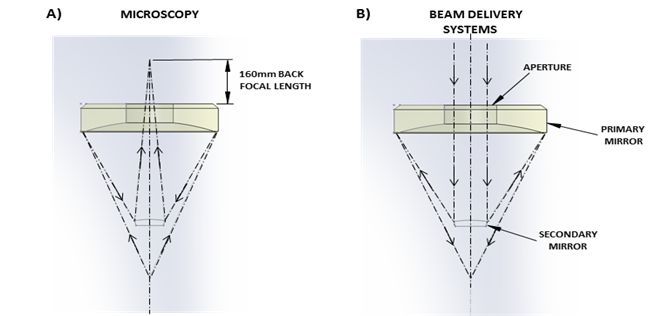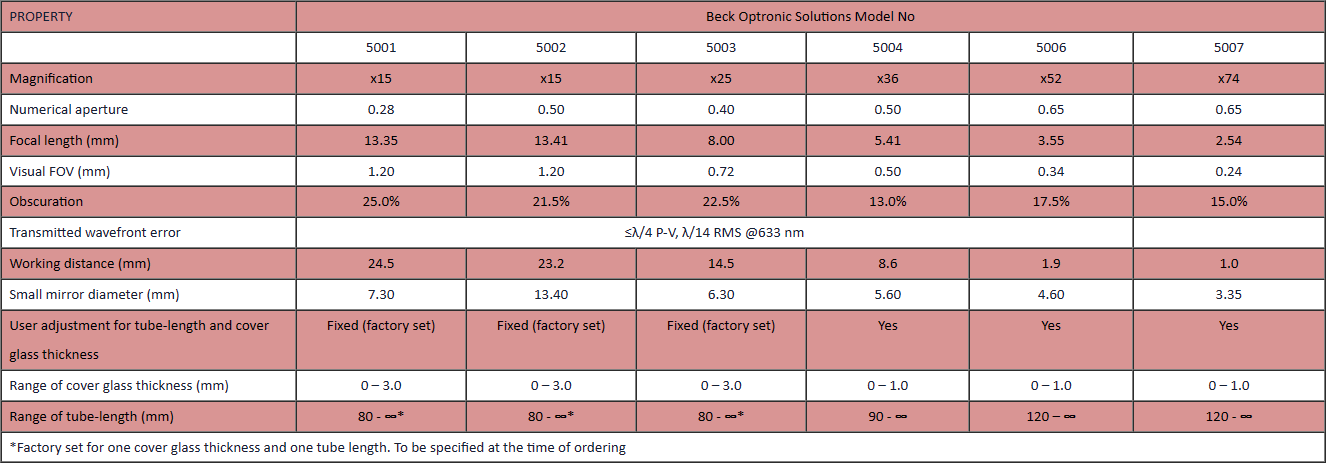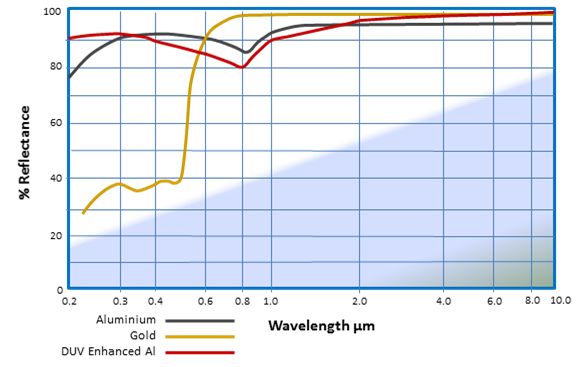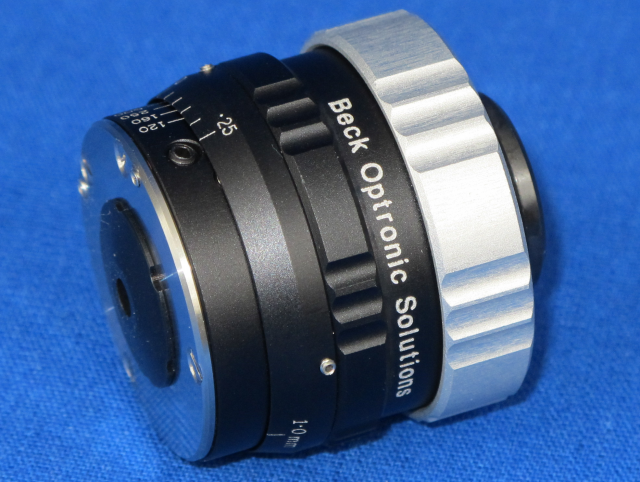基于两个反射镜系统,反射物镜最初是在1904年为显微镜设计的。全反射光学器件意味着与折射物镜相反,它们完全没有色差。 BOS物镜基于C. R. Burch的工作,他在1947年的论文中指出,通过仔细选择镜面曲率及其分离,可以对球面像差,彗形像差和像散进行校正,从而限制了衍射性能。 除了这些校正之外,与标准折射显微镜物镜相比,反射物镜还具有以下优点:
- 工作距离更长;
- 大数值孔径可提高聚光能力;
- 从紫外线到远红外线的高通量;
- 可用于增强特定波长区域性能的涂层;
全反射式物镜的应用包括传统的显微镜和光束传输系统。 由于它们独特地低色差,因此它们特别适合用于需要双波长操作的地方,例如可见光与IR或UV光束一起工作时的校准。 其他用途包括:
- 双光子显微镜;
- FT-IR光谱;
- 紫外线计量和显微镜;
- 半导体晶圆检查;
- 光学显微镜;
- 光刻;
- 薄膜测量;
- 激光束传输系统;
- 激光打孔和蚀刻;
- 产品标记;
- 激光泵浦;
- 热成像显微镜。

六种标准品可选, 同时可根据您的需求进行定制:

The standard reflecting objectives are supplied with aluminium coated mirrors. This gives the widest spectral coverage from UV to far IR, but limits the objective to low power use only. In applications requiring high power, BOS offers alternative coatings as detailed below. For specialised applications we can provide other specialist coatings.

Note: Our standard objectives have a 3 legged spider (to support the secondary mirror) which minimises diffraction but produces a six point flare pattern. A 4 legged spider produces more diffraction but only has a 4 point flare pattern and some users prefer this. Add postfix 4 to part number for a 4 legged spider when you order (3 legs are supplied as standard).
Notes: If back reflections may be an issue in your application a matt black dimple can be ground into the secondary (smaller) mirror. Add postfix -D to the part number.
If you require a clearance hole through the secondary mirror please contact us to discuss the options available.

联系销售经理


